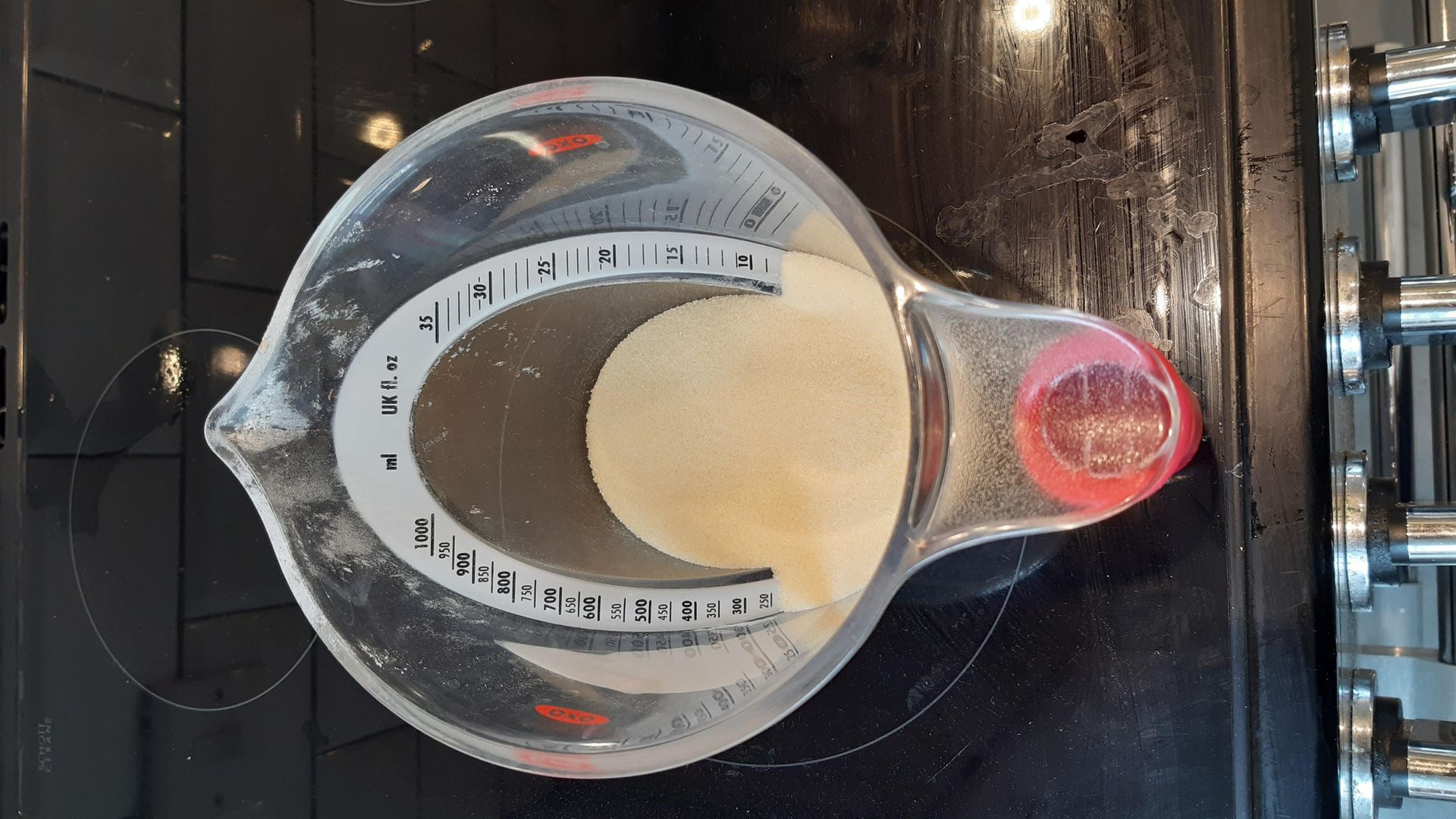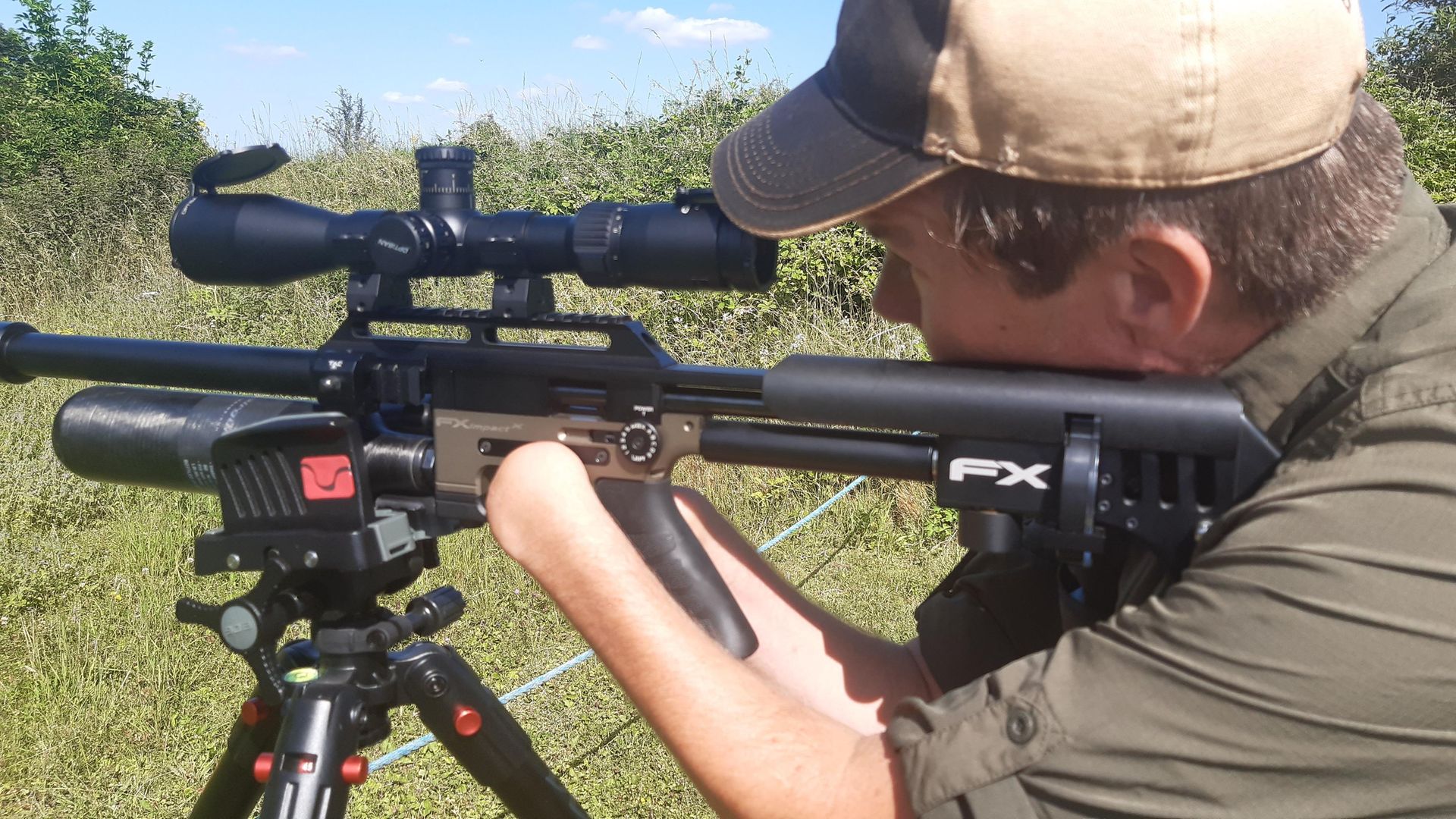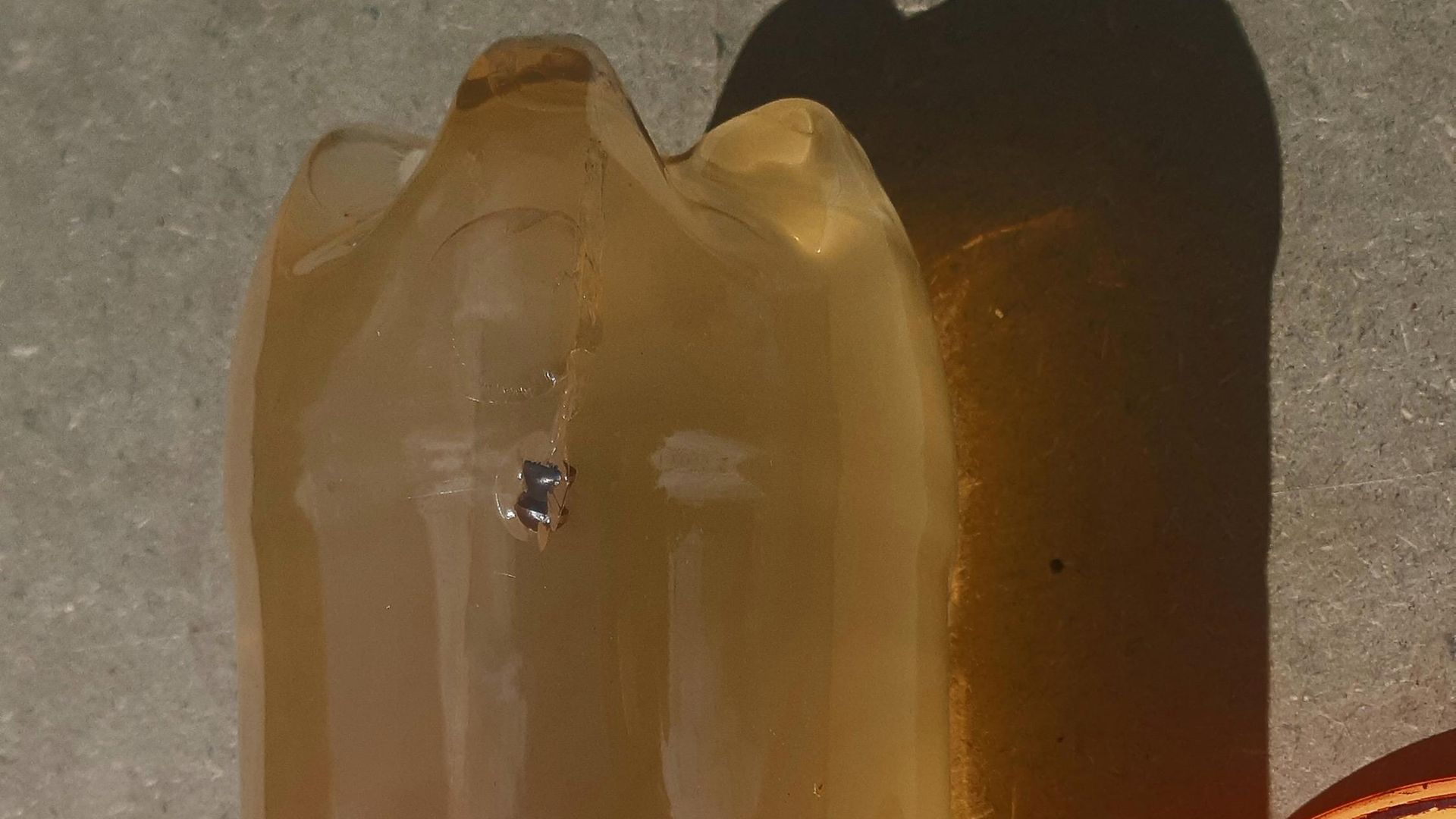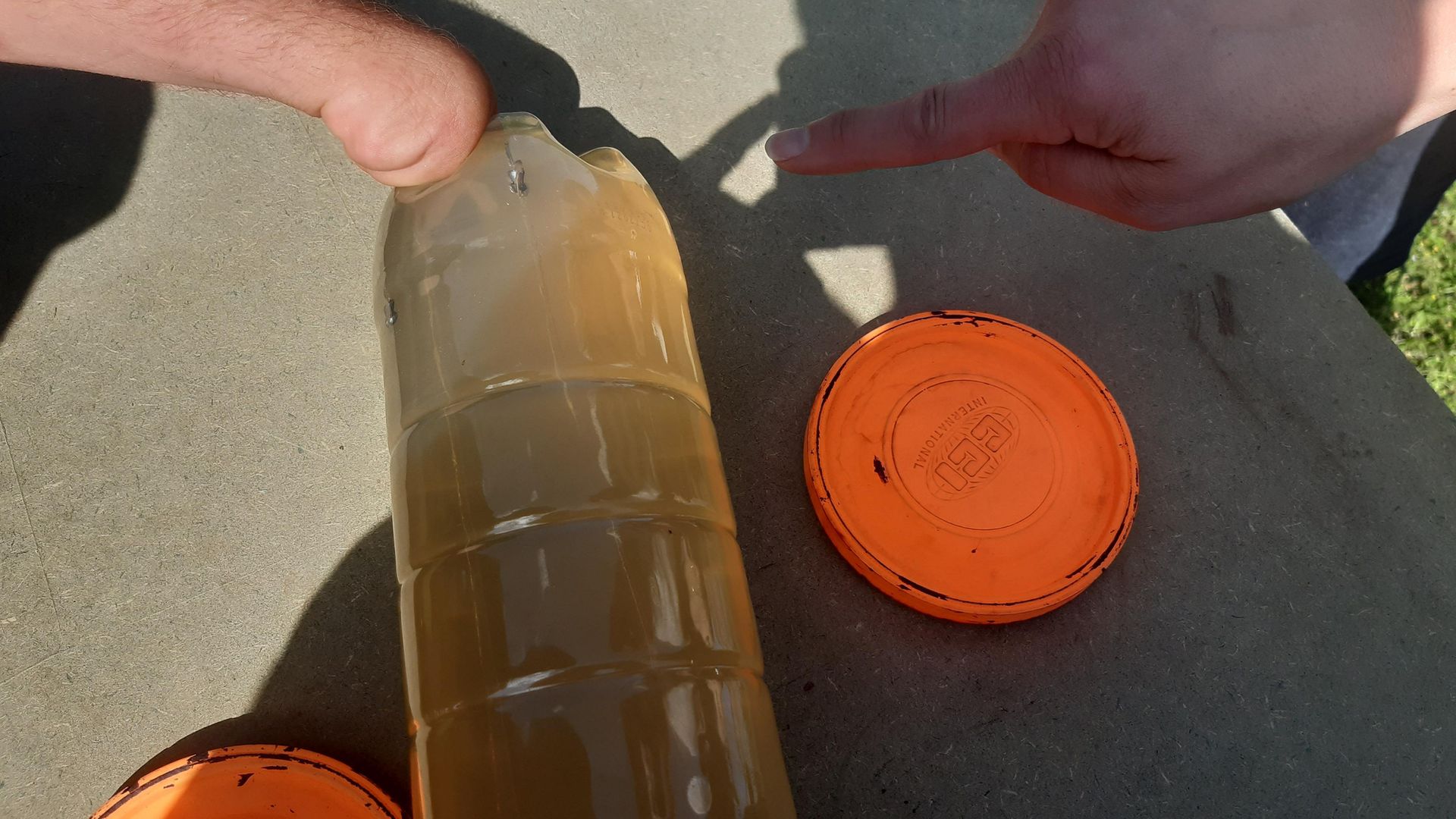Jamie Chandler hits the kitchen in order to manufacture some home-made ballistic gel, then heads out to test some pellets and see if the gel works...
Along with airguns, I have a few other ways of enjoyably filling time; things like cooking, mountain biking, running and surfing. My current addiction is bingeing late at night on YouTube. I can spend hours watching history, top-ten facts, airgun hunting channels, and all sorts. YouTube is a true cornucopia of stuff I never really felt I needed to know and most of which I’ll forget, but I keep going back for a midnight fix.
On one of my most recent searches for a late night YouTube hit, I came across an American guy who made DIY ballistic gel to within 5% density of that approved by the FBI, apparently. He then tested it out using his 9mm pistol, a rifle of a non-specified calibre and a shotgun. I was transfixed. This was on YouTube and involved cooking, iffy science experimentation, and making a massive potential mess all in one. It’s as if someone took all my favourite things and put them in a 12-minute video.
The very next morning, instead of doing any of the many things requiring immediate attention, I ordered the ingredients – ‘ingredient’, in fact – so that I could finally answer a question I’ve been asking myself for years. ‘What sort of wound channel do different 12 ft. lb. airgun calibres create when hitting the same quarry?’
For so long, I’ve listened to ‘.177 this and .22 that’ and seen videos of moulds being taken from clay, shot with .177 and .22 pellets, some of which showed .177 pellets create a bigger wound channel than .22. I know both are effective hunting tools, but this question has always niggled at me. So, if you want to try this or any other legal, DIY ballistic gel experiments at home yourself, here’s how to make your very own ‘almost FBI spec’ ballistic gel.
 credit: Archant
credit: Archant
BALLISTIC GEL RECIPE
Ingredients
- You’ll need powdered gelatine and water at a ratio of 2 to 9 – and that’s it!
The video used two litres of powdered gelatine to nine litres of water. I’ve never used gelatine for anything and could only find it in small sachets of 30g, or so, from supermarkets, so I went on line and found a health food supplier from whom I bought 2kg of best high-grade bovine gelatine, with 48 hour Royal Mail delivery. I had no idea how much two litres of gelatine weighed, so figured I could simply work to the ratio when it arrived in whatever liquid quantity it worked out to be.
Method
- Bring water to the boil, remove from heat, pour into mould, ice cream container or whatever you choose.
- Add the correct amount of gelatine powder, stir vigorously until dissolved.
- Cover, cool in fridge for at least 24 hours and voila! Your ballistic gel is ready. All pretty easy stuff.
I cut down the ratio of two litres of gelatine to nine of water, so that instead of creating enough to stop upward of a 9mm round, it should stop a 12 ft.lb. pellet. I filled two, 2-litre plastic lemonade bottles with the mixture, and then put them in the fridge. To fill one bottle, you need two litres of water and 225ml-ish of gelatine.
Top tips
- Don’t pour the gelatine directly into the pan you boiled the water in, especially if it’s a posh wedding present pan. It turns out that gelatine is extremely sticky and might cause the pan to become so, along with your life if your partner notices.
- Don’t pour the gelatine into the above-mentioned pan, on the hot plate of yours and your partner’s only and so favourite, range cooker. The results are as above, but may cause the saucepan to stick to the hotplate, then burn the gelatine to the said hotplate, leaving similar feelings of ill will.
- Do open a window. Open more than one. In fact, open all windows. The smell of dissolving cow is relatively short-lived, but it will haunt your dreams.
 credit: Archant
credit: Archant
Testing pellets with the ballistic gel
After 24 hours, I beheld my awesome ballistic gel creations, then called my new favourite people, Andy and Zoe, at Targets and Tins Airgun range, to see if I could ‘borrow’ a bit of range space to test it on. Even better, they offered to join me there and bring out a variety of airguns to boot; two FX Impacts, one in .177, and one in .22; a Umarex Glock replica BB gun, and a low-powered, pink Crosman pump-up rifle – this was amazing!
I turned up, giddy like a schoolchild on sports day, yet hid it all under the story of ‘important science, in order to identify wound channel characteristics, and better understand the terminal ballistics of different calibres, which actually was also mainly true.
After an abortive attempt to release the gel from the drinks bottles, we cut the neck end off one bottle and set it on a table 25 yards away from the firing line. Then, using some Bog shooting sticks and a fantastic collapsible hunting chair with built-in rifle rest, that I’d never seen, we prepared to test the gel and pellets.
At this point, I have to mention an amazing FX magazine speed loader that Targets and Tins had sourced from the USA, and Andy demonstrated. You pop the pellets into the loader any old way, give it a shake, then hold it over the open magazine and like magic, 18 shots reloaded in under 10 seconds – and there are four speed loaders in the pack. That’s 72 pellets loaded in about a minute. I was actually astonished! As said, these are only available for FX magazines, and from Targets and Tins, but were amazing and something I hadn’t seen before.
 credit: Archant
credit: Archant
Pellet testing results
Back to the ballistic gel and Andy’s shot first with his .177 FX Impact. The pellet reached the end of the bottle with a clear wound channel, but weirdly, instead of stopping or bursting through the end of the bottle, it turned in the gel and headed back on itself, stopping about three inches back toward the top of the bottle. The channel it created was clear and thin, without much deviation of the gel as it passed through.
Second up was Zoe with her .22 FX Impact topped with a Pard day-and-night scope running at the same 11.3 ft.lbs as Andy’s. Again, on inspection, the bigger pellet had managed to turn itself around in the gel and head toward the top, but this time only about an inch. Also, although not as clear as I’d have liked in the photo, the wound channel was markedly wider and the sides more jagged and compacted. This suggested to my below GCSE Physics mind, that the slower travelling .22 pellet was also slowed quicker as it travelled through the ballistic gel, so that more of its energy was imparted to the matter about it.
Whilst not to a degree that I imagine makes a great deal of difference in sub-12 ft.lbs. airgun hunting, I’ve concluded for myself from that direct comparison, that a .22 does pack a greater punch than its smaller counterpart. Of course, this is only one part of ensuring a humane kill because accuracy is key overall to avoid wounding, and that’s where .177 has an advantage in terms of flatter trajectory, so the old debate on calibre choice can continue unabated!
 credit: Archant
credit: Archant
Was the test scientific?
Andy then bought out the Umarex Glock replica and after firing 30-odd BBs to get his eye in – not at all just because he could – he managed to hit the gel at 25 yards within three shots, in a slight breeze. The BB penetrated halfway down the bottle before stopping, and again, Andy hit the gel with the Crosman Pumpmaster’s open sites, but by the time we tried to take a picture of these after two hours in 28ºC direct sunlight, the gel had stared to melt, closing the channels so that we could barely see anything.
It was in no way a sad ending. We’d had a fantastic few hours, I’d seen Andy and Zoe shoot extremely impressively, and learned about a few new things, most impressively that FX magazine speed loader and finally shown to myself that, yes, obviously a higher calibre pellet creates a bigger wound channel, and I’ve created anecdotal evidence to support my thinking that as it slows down faster on impact, the bigger .22 pellet imparts more energy to the matter around it.
Was it scientific? I guess – sort of. Was it messy? Yes, it was that. Was it fun? Yes, it was a cracking couple of days and I’m going to see how different pellet heads perform in the DIY ballistic gel next!